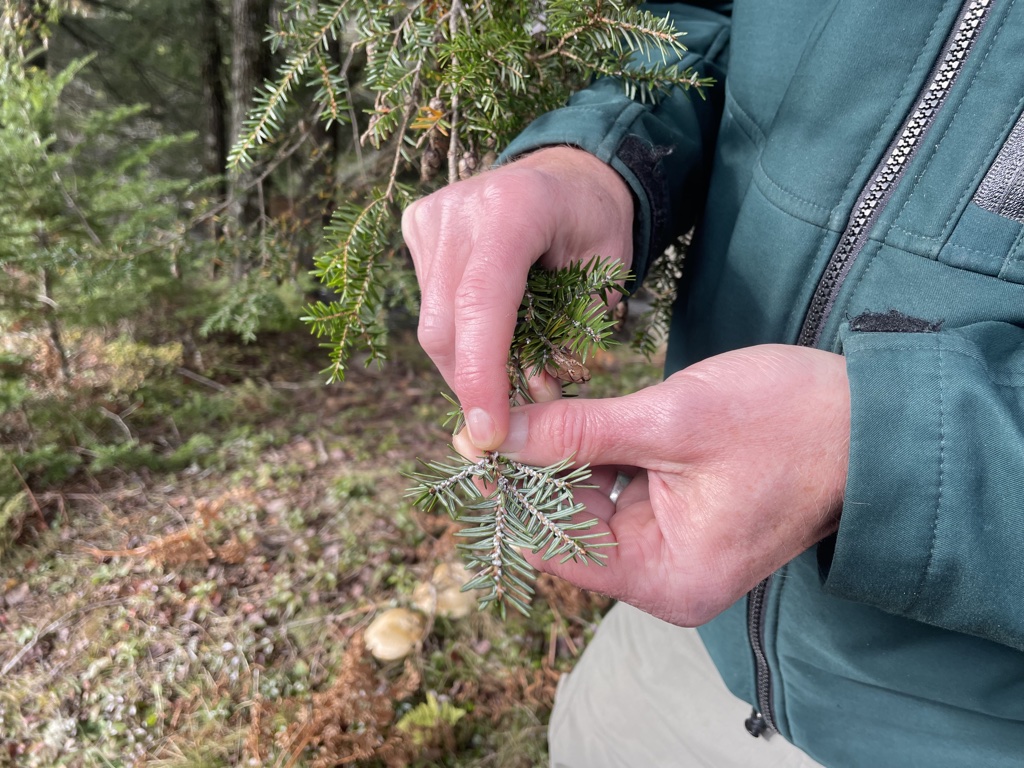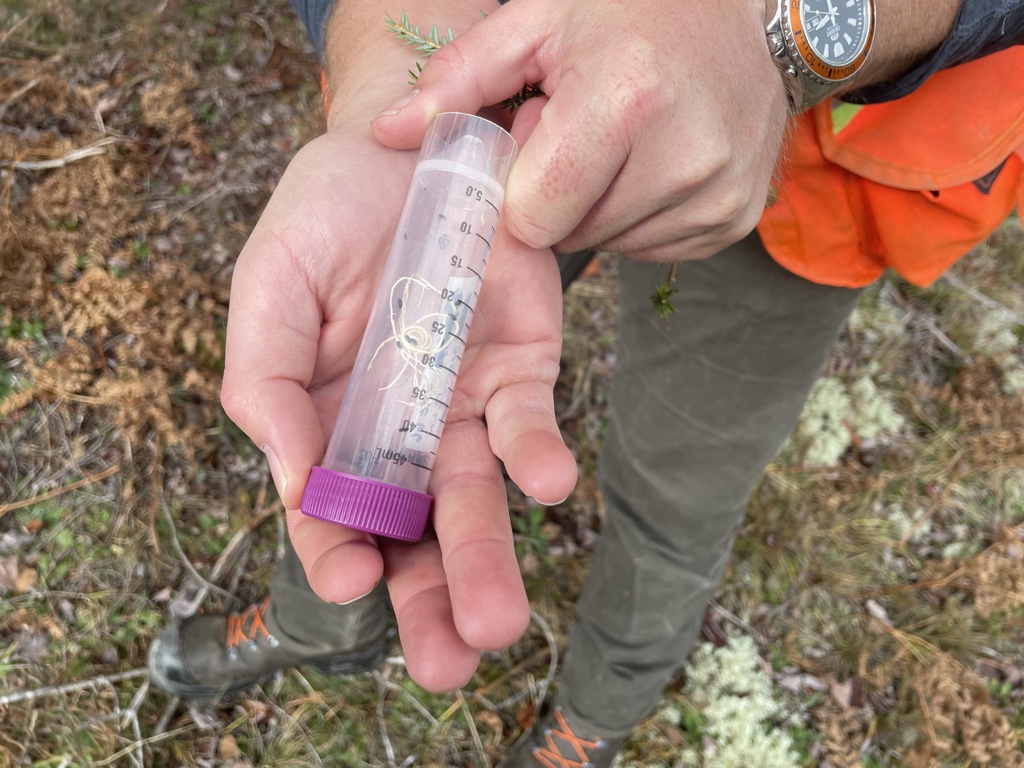Hemlock woolly adelgid.

It may not be a household name, but the invasive insect is leaving its mark in Nova Scotia. They’re rapidly spreading throughout the province and sucking the nutrients from Hemlock trees in their path.
“It’s tiny, but has a big impact. Once it infests an area, trees can die within as little as three years,” said Matthew Smith, an ecologist with Kejimkujik National Park.
“Some (trees) can hang on to 15 years, but right immediately the trees start to decline: they start to lose their needles, they look quite sickly.”
The Hemlock woolly adelgid was first discovered in the province in 2017, causing concern immediately because of the importance of Hemlock trees.
Some Hemlocks in Nova Scotia are more than 450 years old — representing a lot of old growth in the province.
Smith says the Kejimkujik forest is made up of about nine per cent Hemlock trees. Hemlocks are often found along rivers and streams, where they plays an important buffer by creating shade with deep canopy.
The impact of the woolly adeljid means trees turn into grey ghosts, unable to shade the rivers and forest floors.
“It’s an important tree not just in Nova Scotia but in other provinces as well, all the way into Ontario,” explained Dr. Lucas Roscoe, a research scientist with the Canadian Forest Service.
“Anything we can do to keep it on the landscape is really, really important.”
Experts believe they may have a solution: a small tiny bug called the Laricobius beetle.
The beetle is native to Canada’s west coast, and the Canadian Forest Service is now working to introduce five beetles into a single bag alongside the Hemlock woolly adelgid to see how they fare through a Nova Scotian winter.
“This beetle is essentially perfect (…) because it only attacks Hemlock woolly adelgid. It can only complete development on Hemlock woolly adelgid and it’s basically only able to find Hemlock woolly adelgid,” said Roscoe.
So far, the results are immediate. Roscoe showed Global News a beetle eating a Hemlock woolly adelgid shortly after being released.
“To see them do it in about a minute was pretty exciting. But, that is what we’re hoping and, maybe not expecting, but we’re really hoping it happens,” said Roscoe.
Smith calls it a “dream come true.”
“We were hoping this would happen. It took some time because, of course, you don’t enter into something like this lightly. It’s a species that’s being brought in here from the west coast of Canada,” said Smith.
Roscoe believes the pilot project will be a long-term one, that will probably take at least 10 years to see results.
The goal is to release up to 3,000 beetles in areas that are warmer and where the beetles are most likely to survive. That includes Queens and Shelburne counties.
The hope is that the project will create a workable model for provinces that face similar infestations in the coming years.







Comments